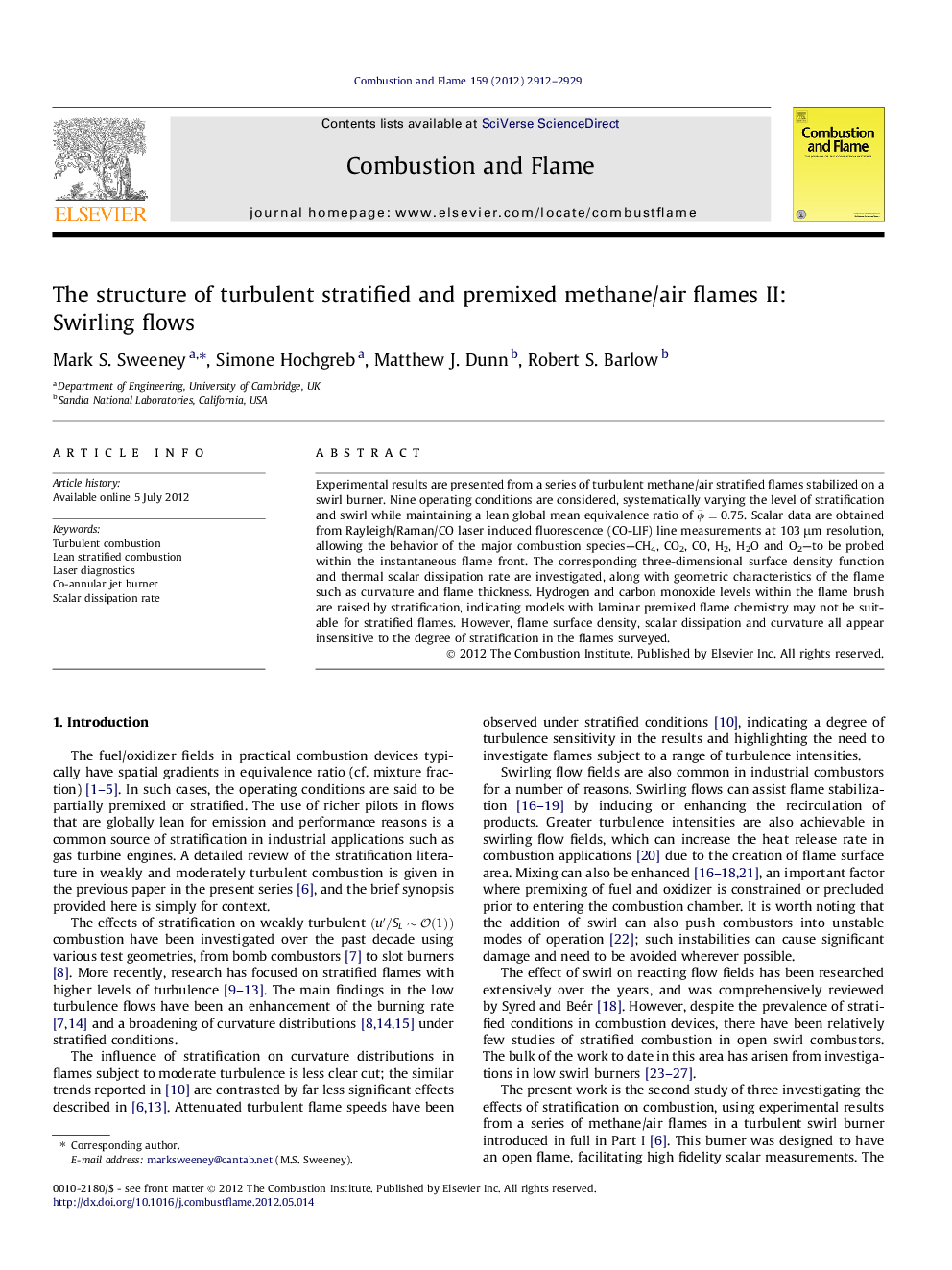| Article ID | Journal | Published Year | Pages | File Type |
|---|---|---|---|---|
| 169762 | Combustion and Flame | 2012 | 18 Pages |
Experimental results are presented from a series of turbulent methane/air stratified flames stabilized on a swirl burner. Nine operating conditions are considered, systematically varying the level of stratification and swirl while maintaining a lean global mean equivalence ratio of ϕ¯=0.75. Scalar data are obtained from Rayleigh/Raman/CO laser induced fluorescence (CO-LIF) line measurements at 103 μm resolution, allowing the behavior of the major combustion species—CH4, CO2, CO, H2, H2O and O2—to be probed within the instantaneous flame front. The corresponding three-dimensional surface density function and thermal scalar dissipation rate are investigated, along with geometric characteristics of the flame such as curvature and flame thickness. Hydrogen and carbon monoxide levels within the flame brush are raised by stratification, indicating models with laminar premixed flame chemistry may not be suitable for stratified flames. However, flame surface density, scalar dissipation and curvature all appear insensitive to the degree of stratification in the flames surveyed.
